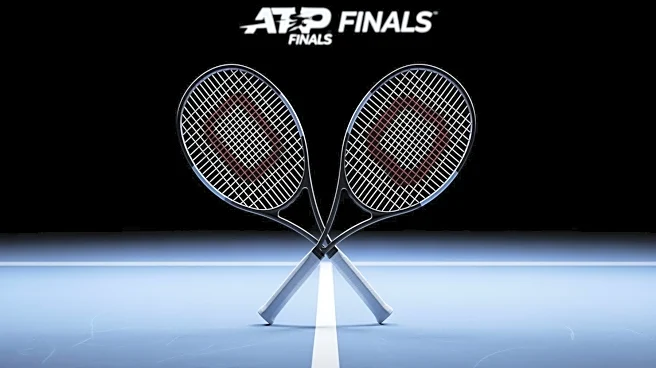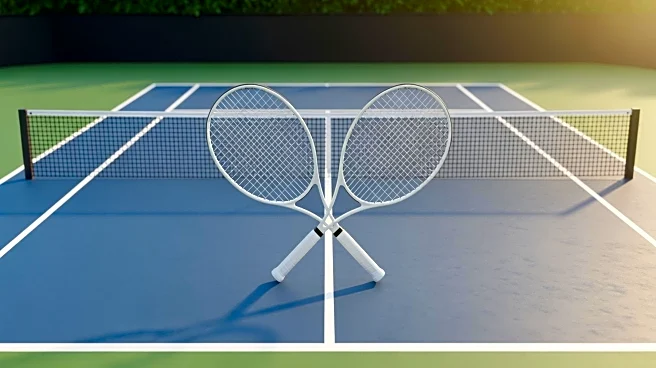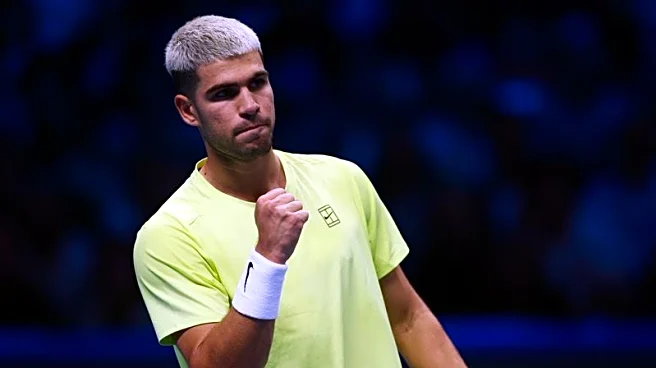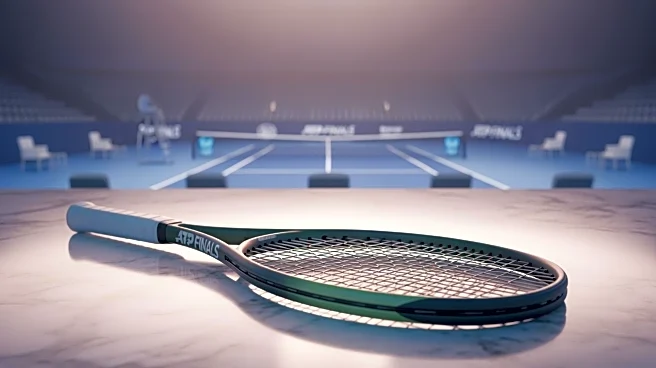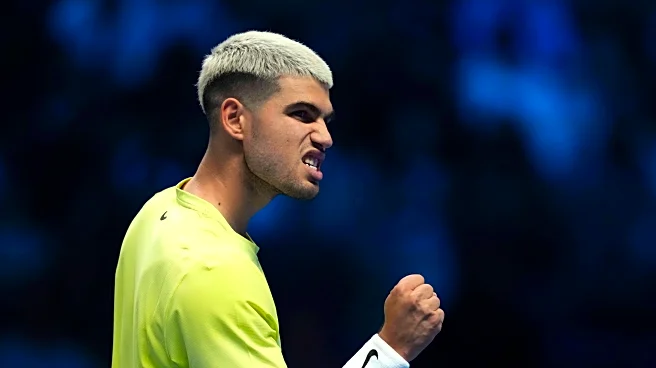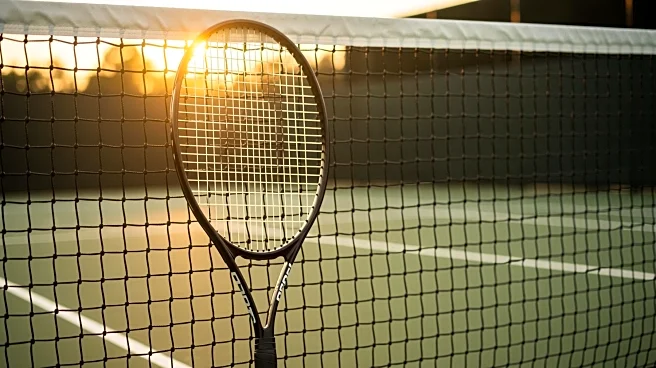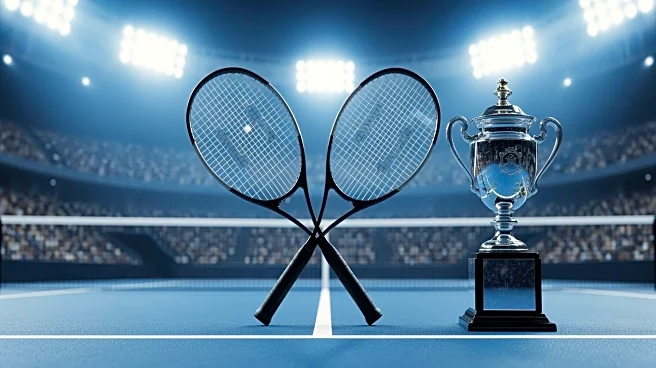What's Happening?
Carlos Alcaraz began his 2025 ATP Finals campaign with a victory over Alex de Minaur, winning in straight sets 7-6(5), 6-2. During the match, Alcaraz wore a NikeCourt Heritage Jacket featuring a logo that sparked speculation among fans and media. The
logo, featuring his initials 'C' and 'A' inside a bubble shape, was mistaken for Alcaraz's signature Nike logo. However, it was revealed that the logo was part of a custom t-shirt for the ATP Finals in Turin and not an official signature logo. Nike Tennis has been criticized for its minimal marketing efforts, and fans expect a more prominent announcement when Alcaraz's official logo is unveiled.
Why It's Important?
The confusion surrounding Carlos Alcaraz's logo highlights the challenges brands face in effectively marketing their athletes. Nike's understated approach contrasts with competitors like adidas, which have a strong social media presence. The incident underscores the importance of clear communication and strategic marketing in sports branding. As Alcaraz and Jannik Sinner are positioned as key figures in Nike's tennis division, the brand's ability to leverage their popularity is crucial for maintaining its market position. The event also reflects broader trends in sports marketing, where athlete branding plays a significant role in consumer engagement.
What's Next?
Fans anticipate an official unveiling of Carlos Alcaraz's signature logo, potentially during the ATP Finals. Nike's marketing strategy may evolve to include more dynamic promotions for its tennis stars, addressing criticisms of its minimalist approach. The brand's future campaigns could focus on enhancing visibility and engagement, leveraging the charisma of athletes like Alcaraz and Sinner. Stakeholders in the sports industry will be watching how Nike adapts its strategies to compete with rivals and capitalize on the growing influence of athlete branding.
Beyond the Headlines
The incident raises questions about the effectiveness of Nike's current marketing strategies and the potential need for a shift towards more engaging and interactive promotions. The role of athlete branding in shaping consumer perceptions and driving sales is increasingly significant, and brands must navigate the balance between subtlety and impact. The broader implications for sports marketing include the need for innovation and adaptation in response to changing consumer expectations and competitive pressures.


